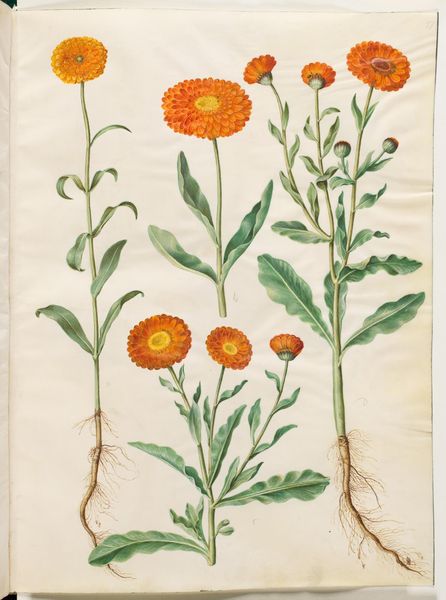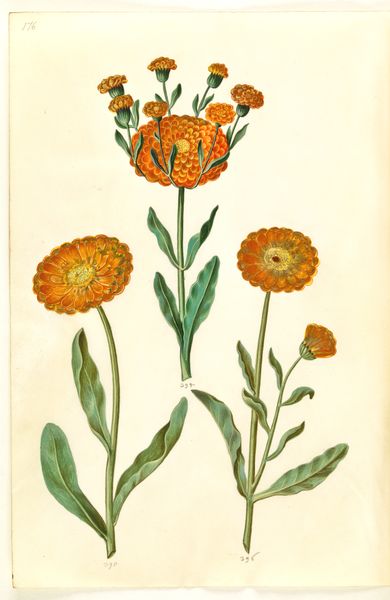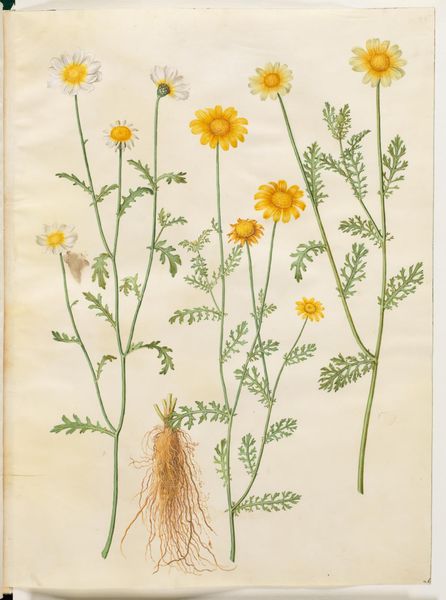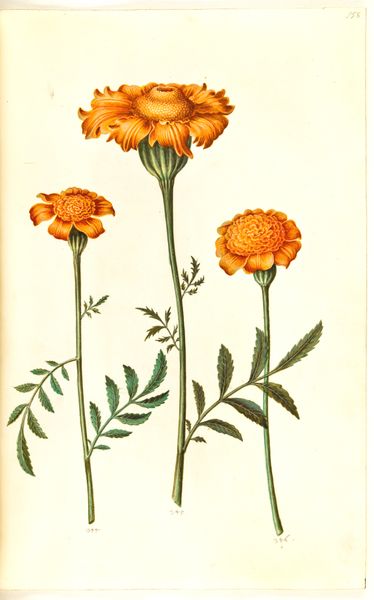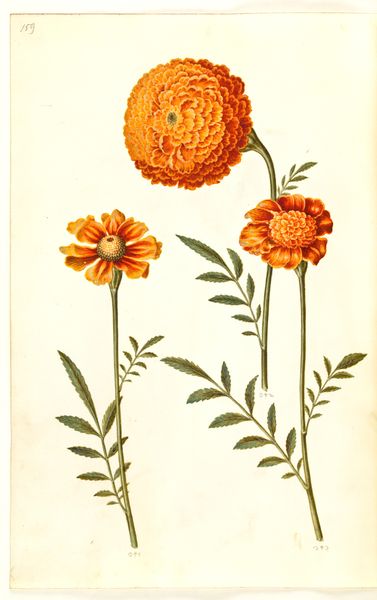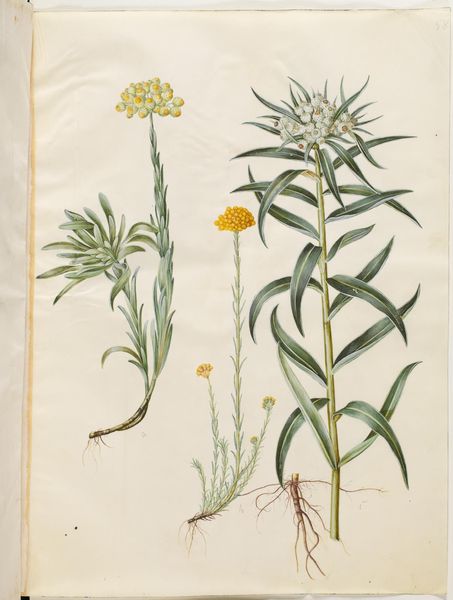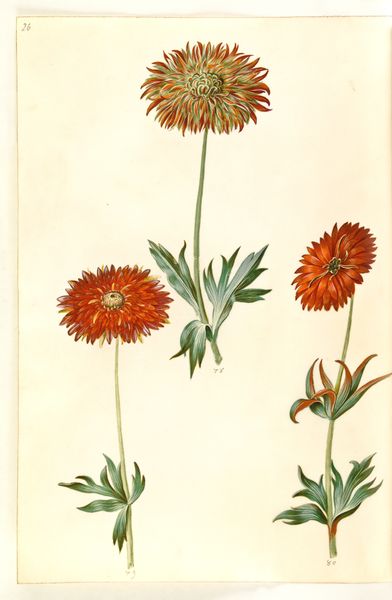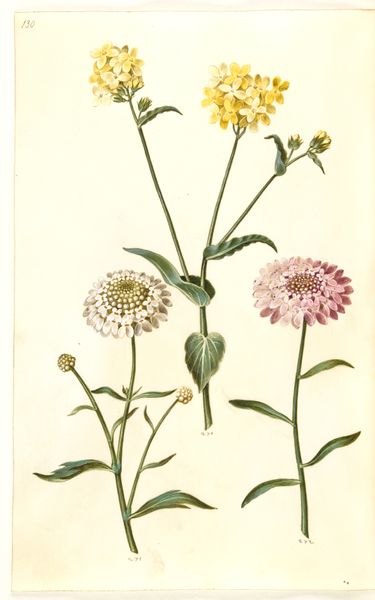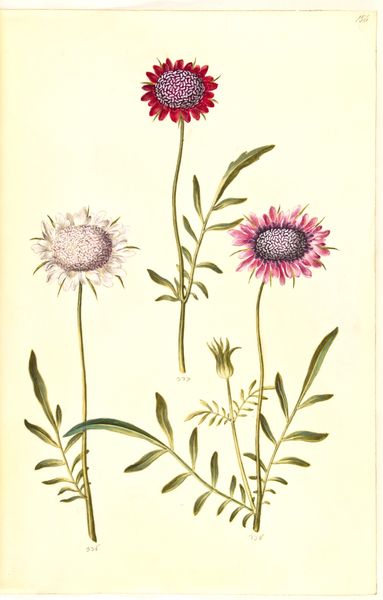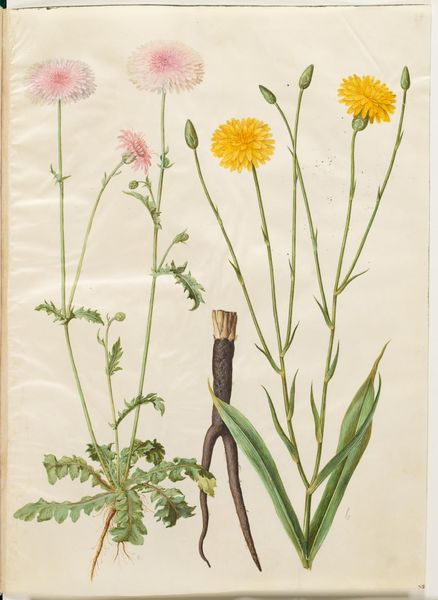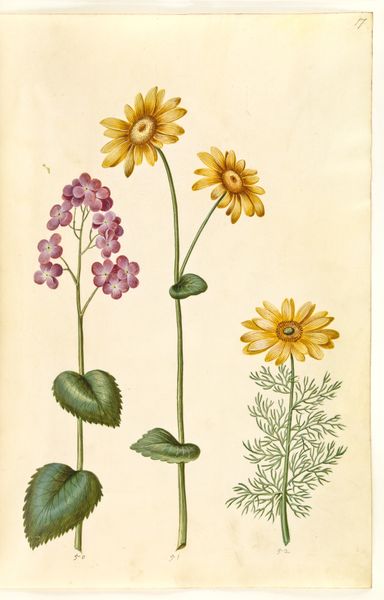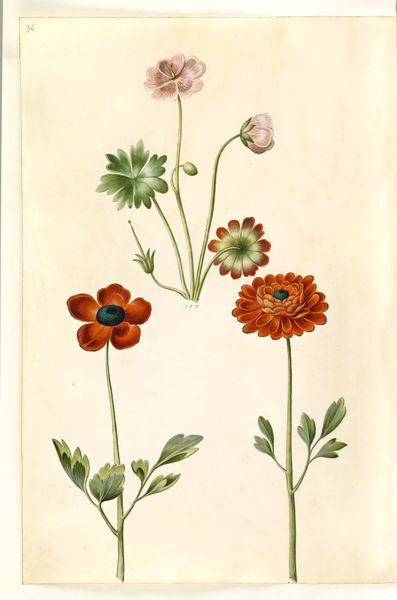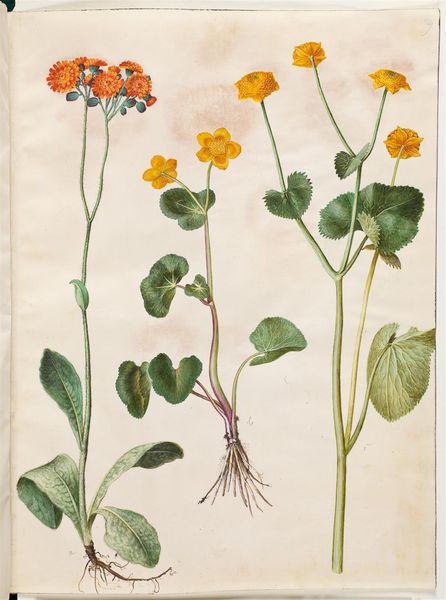
Calendula officinalis (have-morgenfrue) 1649 - 1659
0:00
0:00
drawing, gouache, watercolor
#
drawing
#
water colours
#
gouache
#
watercolor
#
watercolour illustration
#
botanical art
#
watercolor
Dimensions: 505 mm (height) x 385 mm (width) (bladmaal)
Editor: Here we have Hans Simon Holtzbecker’s *Calendula officinalis (have-morgenfrue)*, a watercolor, gouache and drawing from between 1649 and 1659. There's something so delicately scientific about the presentation, yet it also feels incredibly vibrant. What are your thoughts? Curator: This botanical illustration isn’t just a pretty picture; it's a coded document. Think about the context: during this period, the rise of scientific illustration coincided with colonial expansion and the exploitation of natural resources. Calendula, with its medicinal properties, wasn't merely a flower. Editor: So, you are saying it goes deeper than a visual delight, is it? How do you see this piece relating to society back then? Curator: Absolutely. Who controlled knowledge about plants like Calendula, and who benefited? Was it indigenous populations, often women, whose knowledge was appropriated and repackaged by European scientists? Consider this piece as part of a larger system of power, knowledge, and extraction. Holtzbecker’s art serves a certain purpose. Editor: That's a powerful point, framing it as part of a broader system of colonial knowledge production. Is there an intentional political statement within this artwork itself or is it just Holtzbecker contributing to something bigger than him? Curator: It's more about acknowledging the unacknowledged. We might not find overt political statements, but by looking at the context – the burgeoning field of botany intertwined with colonial ambitions – we reveal the power dynamics at play. It is this intersection where science, art, and politics collide. Editor: This definitely shifts my perspective, revealing hidden layers in what seemed like a simple flower illustration. Thank you! Curator: Remember, art is rarely created in a vacuum. By asking critical questions about its context, we unearth complex histories of power, representation, and social impact. It invites conversations about responsibility, history, and artistic intervention.
Comments
No comments
Be the first to comment and join the conversation on the ultimate creative platform.
